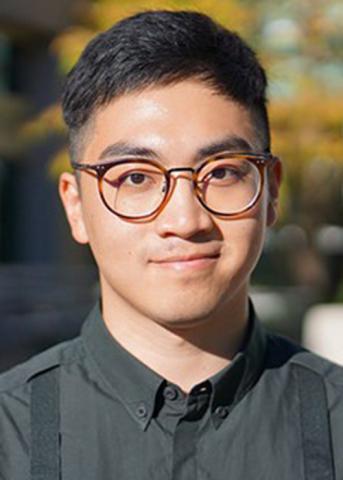Why did you choose biostatistics?
Influenced by my grandmother, who was a head nurse, I had the dream for lifesaving since I was a child. Though I chose math and applied math as my major in college, this dream never vanished. During a mathematics competition in my second year at college, my team and I built a model to predict and prevent the spread of Ebola in Africa. At that time, I discovered my passion for biostatistics. It allowed me to use math to help people live better lives.
Why did you choose the UW?
When I applied to graduate schools, I was interested in statistical learning, causal inference and clinical trials. UW is a leader in these research fields. Being here allows me to develop both depth and breadth in the research I will be doing.
How would you describe your experience in the Department of Biostatistics?
The first year was busy, but rewarding. I started independent study with my academic advisor, Noah Simon, early in the first year. Some quarters were challenging since I needed to balance research, courses and preparation for the qualifying exam. However, the theory and skill I learned through this rigorous training was a benefit to my thesis work and to the internship I did that summer.
What kind of research are you doing?
Noah Simon and I are working on matrix completion problems to estimate missing values in a data matrix. We are applying the square-root lasso method in the matrix completion setting. Compared to the traditional method, the square-root lasso method can estimate missing values without knowing the level of noise in the data (which is generally required in matrix-completion). We are trying to show the robustness of square-root lasso method for tuning parameter selection.
How would you describe the benefit of your research?
The very first step statisticians have to do when they get the data is to deal with missingness. My research enables scientists to learn underlying data structure even if they have missing values. At the same time, we are giving estimation of those missing values.
You currently work at NanoString Technologies. How did you become involved with them and what type of work do you do there?
I reached out to Gitana Garafalo, the program’s academic advisor, and she introduced me to an SPH alum working at NanoString Technologies. I interviewed with them and was offered a summer internship. My work impressed the team and they offered me the opportunity to continue working with them.
I’m working with the biostats team at NanoString to explore new methods for cell-type decomposition and multi-omic data analysis. We’re interested in novel unsupervised learning schema to learn biological pathways.
What are your future goals?
It would be great to use and develop methodology for high dimensional data or data with complex structure. I hope this methodology can help people better understand disease and promote the development of precision medicine.
What do you like most about Seattle?
I like the coffee culture in Seattle. You can find a café almost everywhere, from big brands like Starbucks to local shops such as Seattle Coffee Works. I like exploring cafés with friends, watching baristas make coffee with various brewing methods, and I like talking to them about the different tastes.
What extracurricular activities do you enjoy?
I’m an outdoor enthusiast and foodie. I enjoy hiking, cycling, fishing and crabbing. I also set aside spare time every week either exploring local restaurants or cafés with my friends or cooking at home.
What advice would you give to a student who is considering UW School of Public Health's Biostatistics program?
When considering a biostatistics program, besides the rigor of coursework and expertise of faculty, I would consider what students do when they graduate from the program as an important factor. Our alumni are playing important roles both in academia and industry.
Learn more about the No. 1 Biostatistics program in the country.

